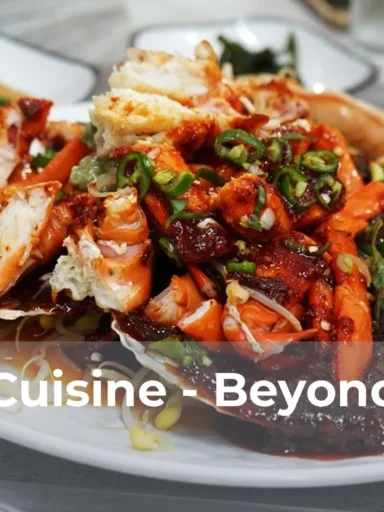Unlock the Flavours of Thai Cuisine
Unlock the Flavours of Thai Cuisine
The Origins of Thai Cuisine
Thai cuisine is celebrated around the world for its bold flavors, vibrant colors, and unique combination of ingredients. But have you ever wondered about the origins of this tantalizing cuisine? Thai cuisine is deeply rooted in the rich history and cultural influences of Thailand. From the ancient kingdom of Sukhothai to the modern flavors of Bangkok, Thai food is a reflection of the country’s diverse heritage and geographical location. By exploring the origins of Thai cuisine, we can gain a deeper appreciation for the flavors and techniques that make it so beloved.
The Key Ingredients of Thai Cooking
Thai cuisine is renowned for its bold flavors and aromatic spices. The secret behind the deliciousness of Thai food lies in its key ingredients. From lemongrass and kaffir lime leaves to galangal and fish sauce, Thai cooking incorporates a unique blend of herbs and seasonings that create a harmonious explosion of taste. Understanding these key ingredients is essential for anyone who wishes to recreate authentic Thai dishes or simply explore the vibrant world of Thai cuisine.
Lemongrass, a staple in Thai cooking, adds a refreshing citrusy note and a hint of floral aroma to dishes. It is commonly used in soups, curries, and stir-fries. Kaffir lime leaves, with their distinctive shape and fragrance, infuse dishes with a zesty and slightly bitter flavor. They are often used in curries, soups, and marinades, lending a citrusy aroma that enhances the overall taste.
Galangal, a rhizome similar to ginger, is a key ingredient that adds a distinct spicy and citrusy flavor to many Thai dishes. It is commonly used in soups, curries, and stir-fries. Fish sauce, known as nam pla, is made from fermented fish and salt. This pungent and savory sauce is the cornerstone of Thai cuisine, adding depth and umami to a wide range of dishes such as stir-fries, salads, and dipping sauces.
Spices and Herbs that Define Thai Flavors
Thai cuisine is renowned for its bold and vibrant flavors, and at the heart of this culinary tradition lie a diverse array of spices and herbs. From the fiery heat of bird’s eye chili to the aromatic richness of lemongrass, these ingredients infuse Thai dishes with their distinctive essence. In this article, we explore some of the spices and herbs that define Thai flavors, offering a glimpse into the world of Thai cooking and the layers of taste that make it so unique.
The Art of Balancing Sweet and Spicy in Thai Dishes
Thai cuisine is renowned for its bold flavors, and one of its key characteristics is the perfect balance between sweet and spicy. The delicate dance between these two tastes creates a harmonious explosion of flavors that tantalize the taste buds. In Thai dishes, sweetness provides a subtle background note that enhances the overall experience, while spiciness adds a fiery kick that adds depth and excitement. Mastering the art of balancing sweet and spicy is a skill that elevates Thai cooking to another level.
The secret to achieving the ideal balance lies in the careful selection and combination of ingredients. Thai cuisine incorporates a variety of sweeteners such as palm sugar, honey, and coconut milk, which lend a natural sweetness to dishes. These sweet elements are then contrasted with the use of chili peppers, ginger, and garlic, which bring the heat. It is in the skillful blending of these flavors that Thai chefs create dishes that leave a lasting impression on diners.
Another essential aspect of balancing sweet and spicy in Thai cooking is the understanding of heat levels. Different chili peppers have varying degrees of spiciness, and Thai cooks are adept at selecting the appropriate pepper to achieve the desired flavor profile. They also know how to adjust the level of spiciness to cater to individual preferences. This thoughtful approach ensures that each dish has the right amount of heat without overpowering the sweetness or vice versa.




